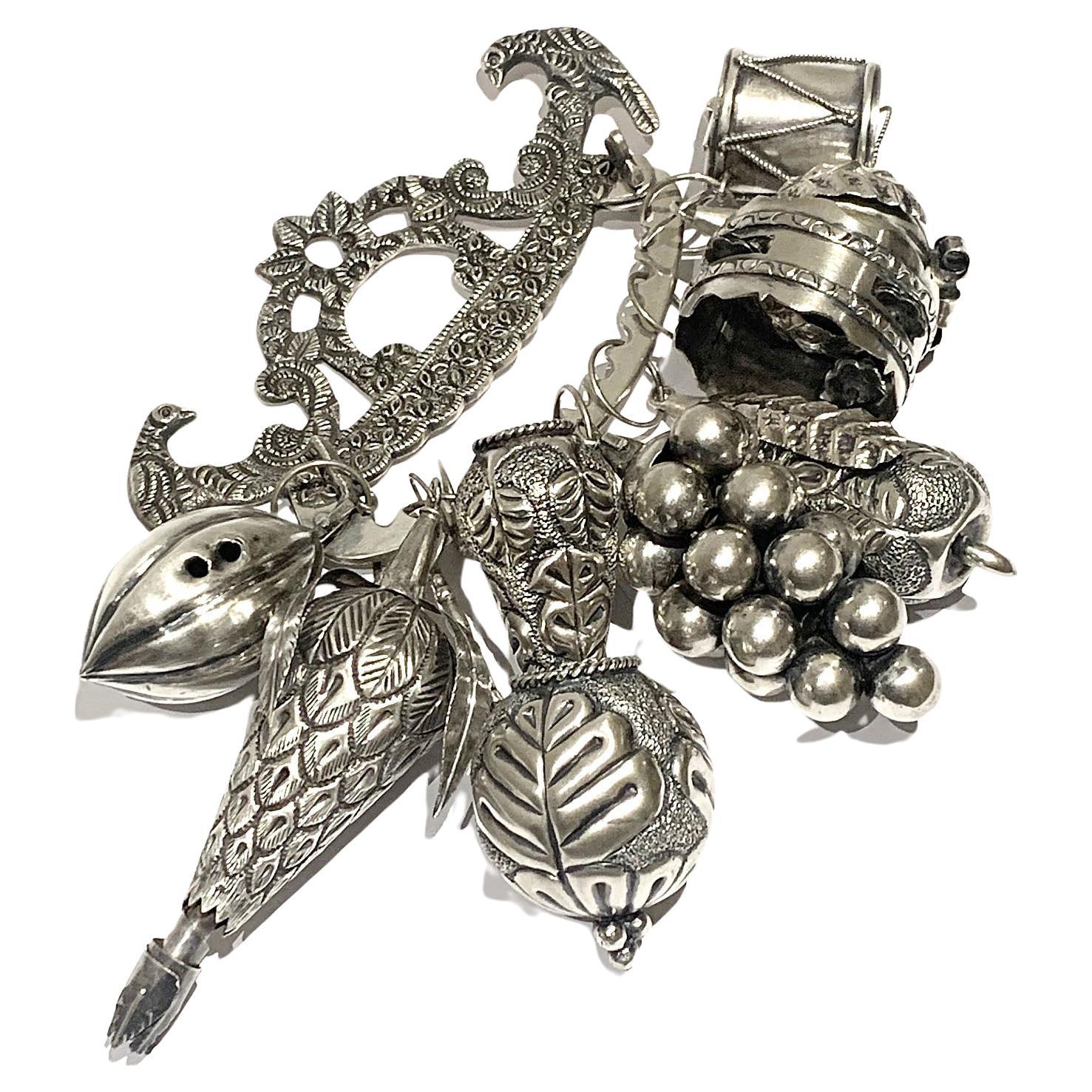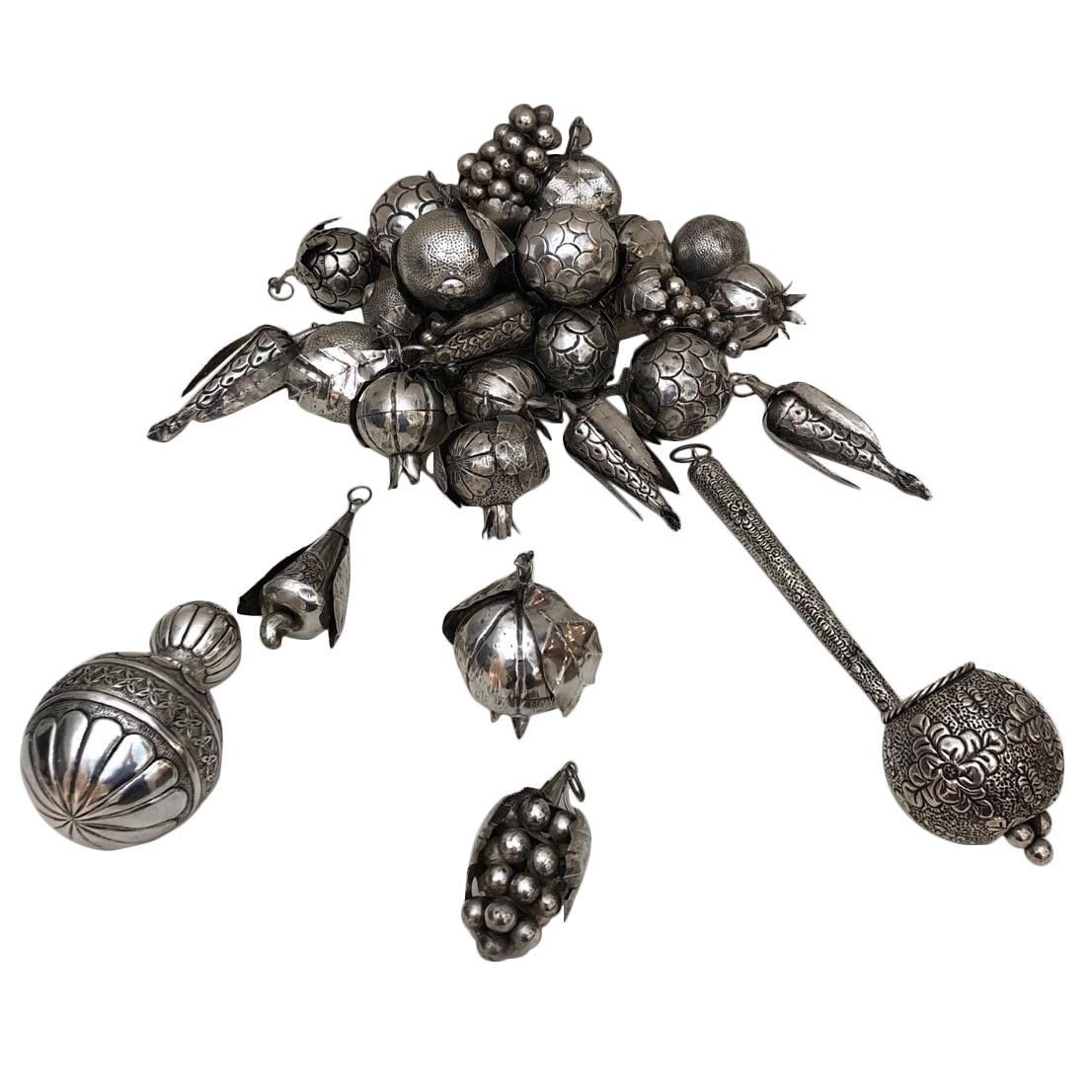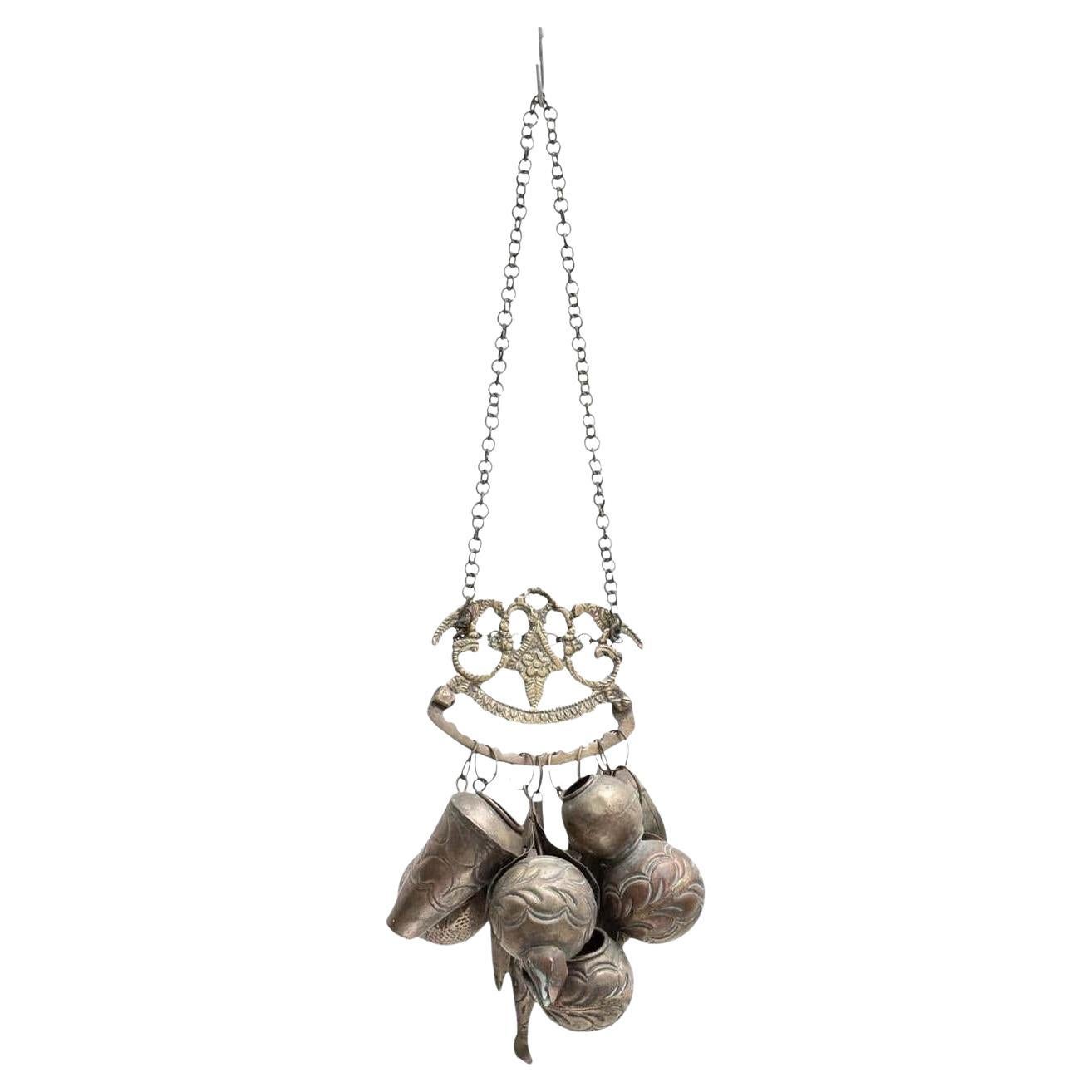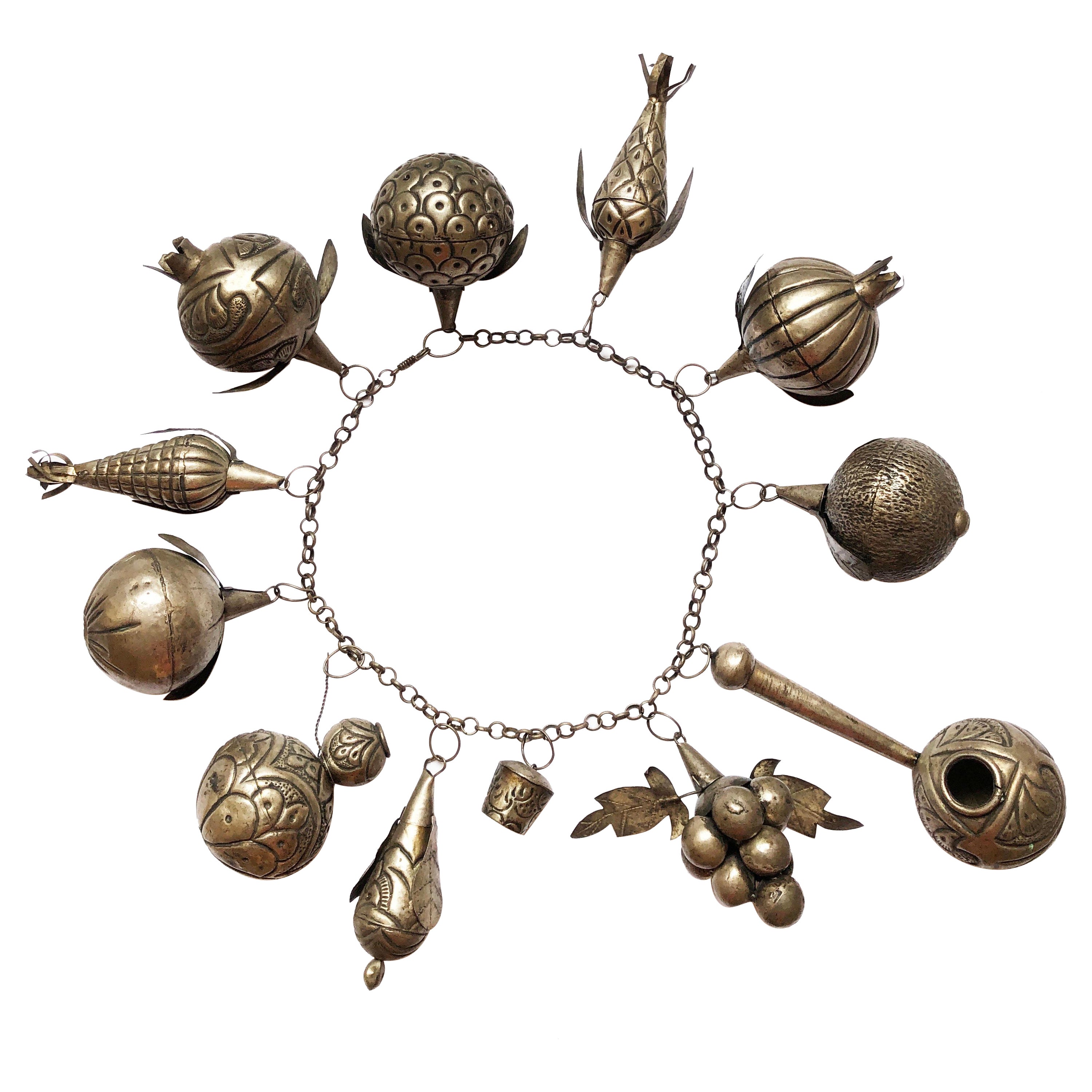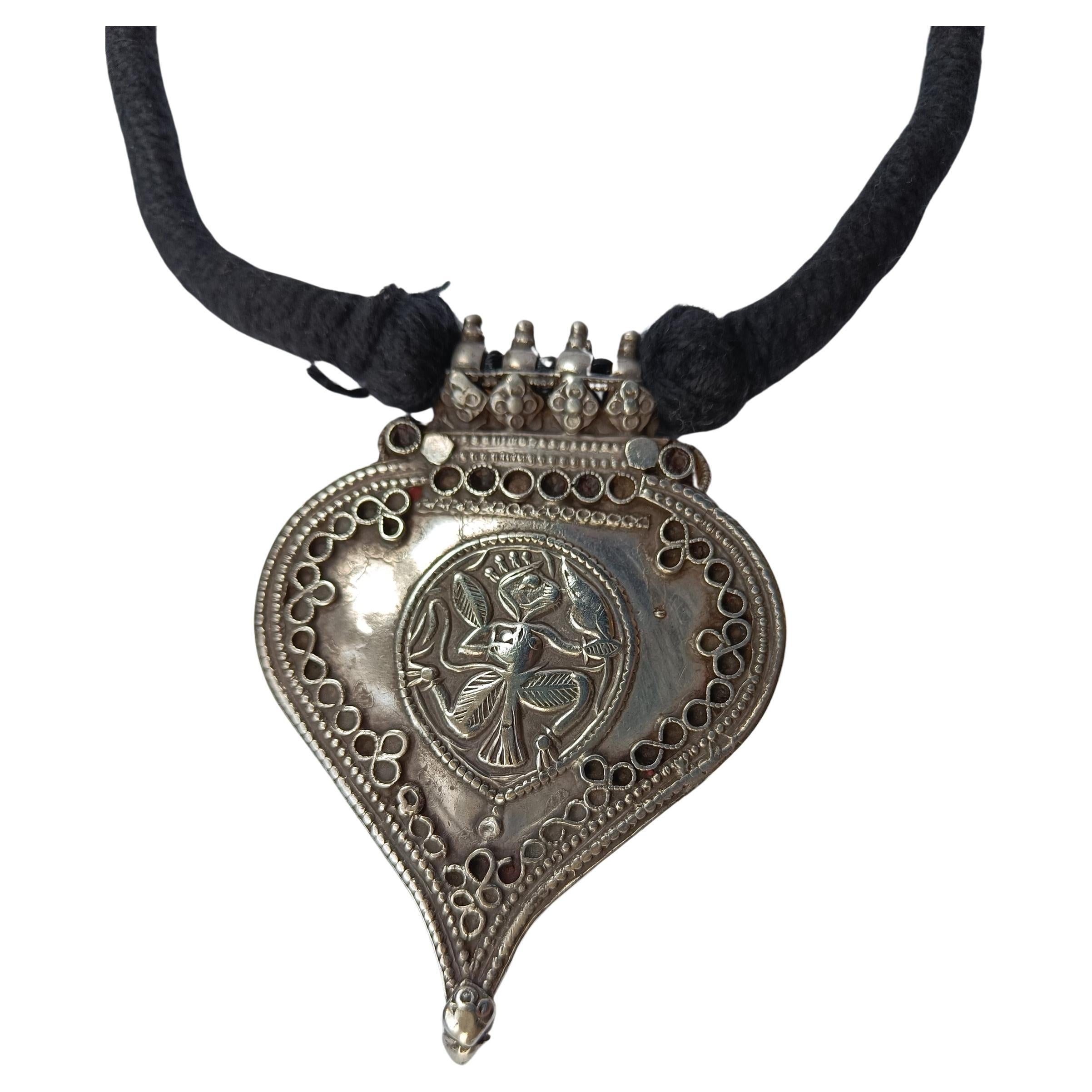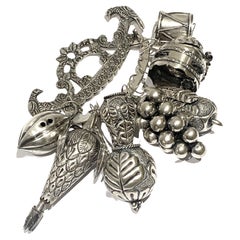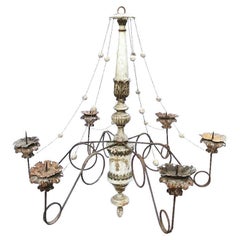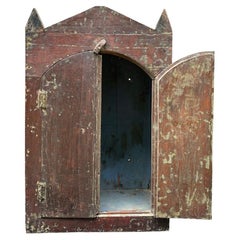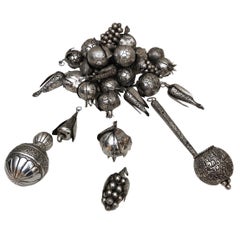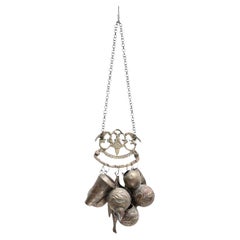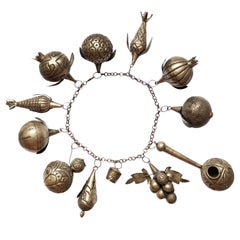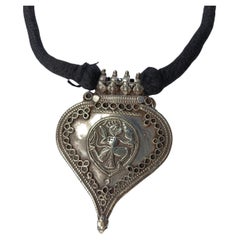Items Similar to Rare Silver Balangandãs - 20th Century Brazilian Native Hanging Amulet
Want more images or videos?
Request additional images or videos from the seller
1 of 6
Rare Silver Balangandãs - 20th Century Brazilian Native Hanging Amulet
$3,900
£2,977.10
€3,422.38
CA$5,488
A$6,102.88
CHF 3,205.36
MX$74,613.84
NOK 39,941.92
SEK 37,654.44
DKK 25,542.02
About the Item
Mid 20th century brazilian silver hanging amulet from native culture in Brazil. Known as "Penca de Balangandãs" was used in the ancient times as an amulet by the enslaved African population in Colonial Brazil. This "set" of pieces brought together by a gorgeous support decorated with birds, tells a little about the history of enslaved people in Brazil during the colonial and imperial periods. Worn by women, this type of piece is considered an "jóia de crioula". It was mostly used on festive days, tied around the waist, showing that this woman, despite being enslaved - often already a "freed slave" - had a social status above the others around, a distinguishing factor.
This "penca de balangandãs" could bring various types of objects. In the one we present, we can see delicately fruits and a very Brazilian object called "cuité", which was used to drink water.
***Note: the measurements are of the piece (penca de balangandãs) assembled (all the pieces togheter as showed in the mais picture) placed on a table.
- Dimensions:Height: 2 in (5.08 cm)Width: 10 in (25.4 cm)Depth: 10 in (25.4 cm)
- Style:Other (In the Style Of)
- Materials and Techniques:
- Place of Origin:
- Period:
- Date of Manufacture:20th Century
- Condition:Wear consistent with age and use. ***Note: the measurements are of the piece (penca de balangandãs) assembled (all the pieces togheter as showed in the mais picture) placed on a table.
- Seller Location:Rio De Janeiro, BR
- Reference Number:1stDibs: LU9400237165022
About the Seller
5.0
Vetted Professional Seller
Every seller passes strict standards for authenticity and reliability
Established in 2000
1stDibs seller since 2023
6 sales on 1stDibs
Typical response time: 18 hours
- ShippingRetrieving quote...Shipping from: Rio De Janeiro, Brazil
- Return Policy
Authenticity Guarantee
In the unlikely event there’s an issue with an item’s authenticity, contact us within 1 year for a full refund. DetailsMoney-Back Guarantee
If your item is not as described, is damaged in transit, or does not arrive, contact us within 7 days for a full refund. Details24-Hour Cancellation
You have a 24-hour grace period in which to reconsider your purchase, with no questions asked.Vetted Professional Sellers
Our world-class sellers must adhere to strict standards for service and quality, maintaining the integrity of our listings.Price-Match Guarantee
If you find that a seller listed the same item for a lower price elsewhere, we’ll match it.Trusted Global Delivery
Our best-in-class carrier network provides specialized shipping options worldwide, including custom delivery.More From This Seller
View AllRare Silver Balangandãs - 20th Century Brazilian Native Hanging Amulet
Located in Rio De Janeiro, BR
Mid 20th century brazilian silver hanging amulet from native culture in Brazil. Known as "Penca de Balangandãs" was used in the ancient times as an amul...
Category
Mid-20th Century Brazilian Other Tribal Art
Materials
Sterling Silver
Huge Spanish Colonial Revival Chandelier - Circa 1920-1930
Located in Rio De Janeiro, BR
This magnificent Spanish Colonial Revival chandelier, dating from the 1920s, is a true testament to the craftsmanship and aesthetic...
Category
Early 20th Century Peruvian Spanish Colonial Chandeliers and Pendants
Materials
Iron
19th Century South America "Slave" shrine
Located in Rio De Janeiro, BR
Solid wood, with original patina from the time.
Made by slaves, during the dark slavery times, to worship and pray.
Dimensions: 18,70 inches W x 33,26 inches H x 10,62 inches D.
...
Category
Antique Mid-19th Century Brazilian Folk Art Religious Items
Materials
Cedar
Brazilian Folk Shrine, Late 19th to Early 20th Century – Ceará Region
Located in Rio De Janeiro, BR
Brazilian Folk Shrine, Late 19th to Early 20th Century – Ceará Region
This extraordinary devotional shrine, measuring 119 cm in height by 86 cm in width, is a rare and evocative exam...
Category
Antique 1890s South American Folk Art Painted Furniture
Materials
Wood
Late 18th Century Spanish Colonial Bargueño
Located in Rio De Janeiro, BR
This late 18th-century Peruvian bargueño is an outstanding example of Spanish Colonial craftsmanship, featuring vibrant hand-painted decoration and intricate hardware. The front pane...
Category
Antique Late 18th Century Peruvian Baroque Cabinets
Materials
Wrought Iron
Rare 17th Century South American Colonial Shrine
Located in Rio De Janeiro, BR
Rare 17th Century South American Colonial Shrine
Straight box with pediment cut into stylized volutes. Made of polished cedar, with wrought iron fittings, this oratory reflects the ...
Category
Antique Late 17th Century Brazilian Baroque Religious Items
Materials
Cedar
You May Also Like
31 Brazilian Silver Amulets
Located in New York, NY
These 31 Brazilian amulets, or balangada, were hammered from sheets of silver in the 19th century to form pomegranates, sugar apples, guava, and other...
Category
Antique Mid-19th Century Brazilian Folk Art Tribal Art
Materials
Silver
$8,500 / set
Early 20th Century Brazilian Metal Hanging Amulet 'Penca de Balangadas'
Located in Barcelona, ES
Early 20th Century Brazilian Metal Hanging Amulet 'Penca de Balangadas' – Circa 1890
Discover the captivating history behind this early 20th-century metal hanging amulet, known as '...
Category
Antique 1890s Brazilian Tribal Tribal Art
Materials
Brass
$586 Sale Price
58% Off
1960s Antique Large Penca De Balangandan Afro-American Amulet Tinplate, Brazil
Located in Andernach, DE
Absolutely unique very large creole 'Penca De Balangandan' from Brazil from around 1960.
Tin base, possibly silver plated.
Traditional slave amule...
Category
Mid-20th Century Brazilian American Colonial Tribal Art
Materials
Tin
$483 Sale Price
66% Off
Antique Indian Hindu Silver Amulet necklace Ritual wearable collectible Asian
Located in London, GB
Antique Indian Hindu Silver Amulet necklace
Period 19th century
High grade silver
Pendant Length 8 x 6 cm weight 60 grams
Condition: Fine.
Restrung on cotton.
Category
Early 20th Century Indian Tribal Art
Materials
Silver
Tribal Ceremonial Silver Ornament/Neckrings, Sculpture, Miao, Guizhou, Plus Stand
Located in Los Angeles, CA
This is a great and important ceremonial neck rings ware by the people of the Minorities of China, the Golden triangle ,Mongolia and Tibet. These pieces were made of low content of s...
Category
20th Century Chinese Modern Tribal Art
Materials
Metal
Yao Silver Chain Necklace
Located in Chicago, IL
This finely crafted piece was made high in the mountains above Thailand, Laos and Burma (modern day Myanmar) by an indigenous hill tribe. The Yao people are skilled silversmiths who ...
Category
Mid-20th Century Laotian Tribal Art
Materials
Silver
$7,125 Sale Price
25% Off
More Ways To Browse
Brazil Silver
Rare Brazilian Furniture
Rare Vintage Ties
Brazilian Amulet
Silver Amulet
Sterling Watering Can
Sterling Silver Watering Can
Drinking Bird
Imperial Brazil
Brazilian Colonial Furniture
African Carved Doors
Tribal Headrest
Antique Anklet
Congo Currency
New Guinea Figure
Adze Used
Mali Bambara
West African Mask
